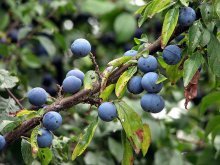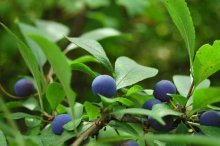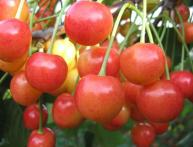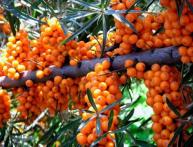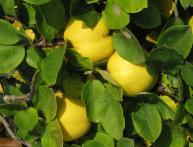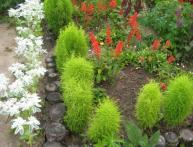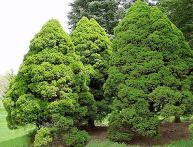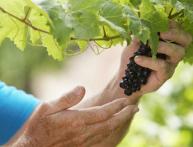Prickly plum and what are the benefits of its fruits
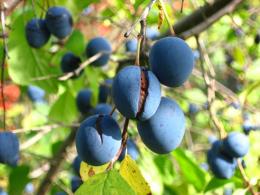
Barbed plum Popularly called blackthorn. The fruits of the bush can bring great benefits to the human body. Many people do not even suspect that it can be used for medicinal purposes.
Content:
- Prickly plum: description
- Beneficial features
- Application of the turn
- Rules for collecting and procuring raw materials
Prickly plum: description
Blackthorn or prickly plum is a small shrub that belongs to the Rosaceae family and the Plum subfamily. It grows along roads, in ravines, and on forest edges. The thorny bush can reach 4 meters in height.
The leaves consist of a petiole and a blade, which is ovoid in shape. The thorn branches are numerous, pubescent, with a sharp thorn at the end. The buds are in the form of a ball and are located in the internodes of 2-3 pieces. The bark of the shrubs is brown. The root system of the prickly plum is powerful and branched.
The blackthorn begins to bloom at the end of April. The flowers of the thorn are white with a pinkish tint, solitary, located on small peduncles. During the flowering period there is a slightly bitter smell almonds. Fruiting begins at the age of two.
The berries are spherical, about 10-15 mm in diameter. The fruits are dark with a blue tint and a bluish tinge. The fruit ripening period is August-September. The tart taste of the berries decreases after the first frost.
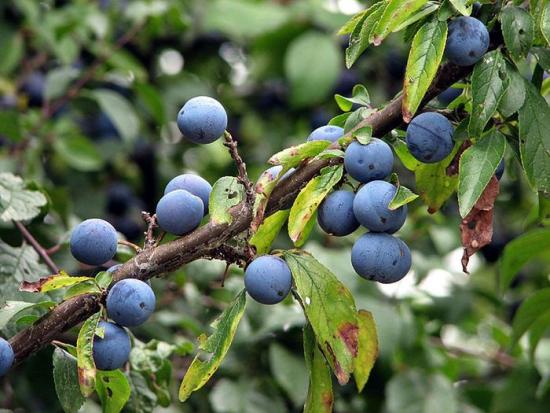
The thorn is resistant to frost and drought and does not require shelter for the winter. The soil for growing prickly plums must be fertile and well-drained.It is better to place in the sun or a slightly darkened place.
Sloes are propagated by cuttings, seeds, and grafting. In autumn, fresh seeds are sown after removing the pulp. This procedure can be done after pre-sowing seed treatment, in the spring. Planting in a permanent place is carried out in autumn or spring. The time for harvesting fruits is the end of summer.
Beneficial features
Plum fruits are rich in many beneficial substances:
- Sugars
- Aromatic substances
- Pectic substances
- Organic acids
- Cyanide compounds
- Vitamins S, B and R
The juice is used in the form of compresses for various skin diseases. Due to its antibacterial properties, the juice is useful to drink for dysentery, indigestion, colitis, and poisoning.
The dark blue fruits of the thorn have a diuretic, diaphoretic and antiseptic effect. To eliminate vomiting and nausea, an infusion of prickly plum flowers will help. Thorn is a good laxative and helps improve metabolism. A decoction of thorn flowers is useful for gargling. Plum helps get rid of insomnia, normalizes sleep and strengthens the nervous system.
The fruits of the prickly plum are consumed fresh, dry and canned. An infusion of prickly plum roots will help reduce fever. Not everyone can eat blackthorn fruits.
Plum is contraindicated for people with diseases such as gastritis, ulcers, and high stomach acidity.
Application of the turn
Prickly wood plums used for economic purposes. It polishes well, is very durable and hard. You can use it to make various crafts, canes, etc. Buttons are made from the seeds. If plum juice is boiled in alkali, the flax can be dyed red.For painting, several types of paint can be obtained from the juice and roots of thorns.
In horticulture, sloe is used to graft certain varieties of trees. From thorn seeds you can obtain oil, which is later used in the manufacture of confectionery products. On the site of a country house, thorny bushes are used as a decorative element. Its beautiful spreading branches make it possible to create hedges.
In alternative medicine, not only the fruits and leaves of the prickly plum, but also other parts of the bush are widely used. To prepare an infusion of sloe flowers, you need to pour 40-50 g of raw material into 250 ml of water at room temperature. This remedy is used for bladder diseases, constipation, kidney or liver pathologies. It is useful to take this infusion during a cold.
To prepare an infusion from the leaves, you need to collect them after flowering and brew them as tea. This means take half a glass three times a day. To prepare an antipyretic, you need to take equal amounts of thorn bark and roots (5 g each) and pour a glass of boiling water. Then boil in a water bath for 30 minutes. Take 1/3 cup orally three times a day after meals.
Rules for collecting and procuring raw materials
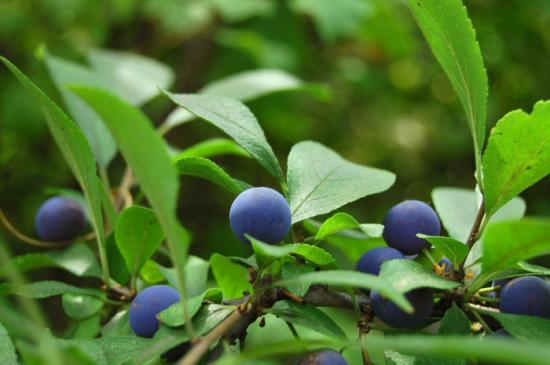
Prickly plum flowers are collected during flowering. They are cut along with the branches and then separated. In good dry weather, flowers are dried outdoors, in rainy weather - indoors. Harvesting of shoots begins in late spring.
Blackthorn fruits are collected after the first frost. Due to the high content of tannins, the fruits have a very tart taste. Therefore, it is better to wait until frost, when the astringent taste disappears.You can dry it in any conditions: in the sun, in special dryers or ovens. Before drying plum berries, you need to remove rotten fruits, clean them of leaves, fragments of branches, etc.
Use in medicinal For this purpose, only high-quality raw materials are used. The length of the dried petals should be 5-8 mm, and the flowers should not exceed 15 mm in diameter. If the fruits are well dried, they have a bluish coating and taste sour and astringent. Fruits, leaves and flowers are stored for a year, and roots and bark for no more than three years.
Video about prickly live:

